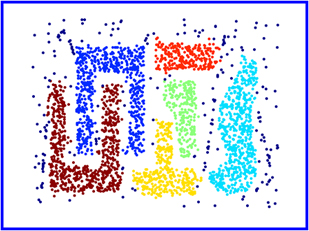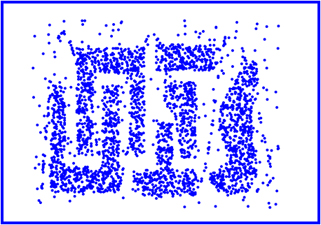Objectives
The objectives of this section are:
define density-based clustering
explain the major parts
introduce the DBSCAN algorithm
list the limitations and advantages of this method
Outcomes
By the time you have completed this section you will be able to:
explain the basic DBSCAN algorithm
label points into the appropriate group type
determine which scenarios this algorithm would yield good results.
Strengths and Weaknesses
Strengths
DBSCAN is resistant to noise and can handle clusters of various shapes and sizes. They are a lot of clusters that DBSCAN can find that K-mean would not be able to find. For instance Figure 4 (left) shows the original data points and Figure 5 shows on the right, the clusters created using the DBSCAn algorithm. As you examine these images it is important to not that the noise around the outer parameters are handled appropriately.


Weaknesses
DBSCAN does not work to well when we are dealing with clusters of varying densities or with high dimensional data

